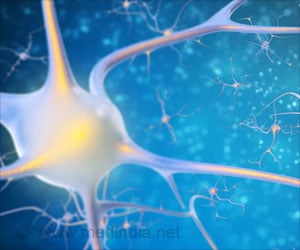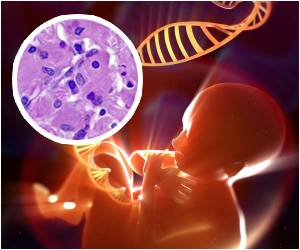An international study suggests that the delayed language acquisition in youngsters from Southeast Asia was linked to changes in brain’s white matter caused by a chromosomal deletion.

Lalani, assistant professor of molecular and human genetics at BCM, is a clinical geneticist and also signs out diagnostic studies called chromosomal microarray analysis, a gene chip that helps identify abnormalities in specific genes and chromosomes, as part of her work at BCM's Medical Genetics Laboratory.
"I got intrigued when I kept seeing this small (genomic) change in children from a large sample of more than 15,000 children referred for chromosomal microarray analysis at Baylor College of Medicine. These children were predominantly Burmese refugees or of Vietnamese ancestry living in the United States. It started with two children whom I evaluated at Texas Children's Hospital and soon realized that there was a pattern of early language delay and brain imaging abnormalities in these individuals carrying this deletion from this part of the world. Within a period of two to three years, we found 13 more families with similar problems, having the same genetic change. There were some children who obviously were more affected than the others and had cognitive and neurological problems, but many of them were identified as late-talkers who had better non-verbal skills compared to verbal performance," said Lalani. Hunter, helped in determining the specific pattern of white matter abnormalities in the MRI (magnetic resonance imaging) scans in children and their parents carrying this deletion. Most of the children either came from Southeast Asia or were the offspring of people from that area. (White matter is the paler material in the brain that consists of nerve fibers covered with myelin sheaths.)
Now, in a report that appears online in the American Journal of Human Genetics, Lalani, Hunter and an international group of collaborators identify a genomic deletion on chromosome 2 that is associated with bright white spots that show up in an MRI in the white matter of the brain . The chromosomal deletion removes a portion of a gene known as TM4SF20 that encodes a protein that spans the cellular membrane. They do not know yet what the function of the protein is. They found this genetic change in children from 15 unrelated families mainly from Southeast Asia.
"This deletion could be responsible for early childhood language delay in a large number of children from this part of the world," says Lalani.
She credits Dr. Wojciech Wiszniewski, an assistant professor of molecular and human genetics at BCM with doing much of the work. Wiszniewski has an interest in genomic disorders and is working under the mentorship of Dr. James R. Lupski, vice chair of the department of molecular and human genetics.
Advertisement
"In a way, this is a good news story," said Hunter. There is evidence from family studies that some of these children may do quite well in the future, said Lalani.
Advertisement
Because these are all within a geographic location, she suspects that there is an ancient founder effect, meaning that at some point in the distant past, the gene deletion occurred spontaneously in an individual, who then passed it on to his or her children and to succeeding generations.
"It is important to follow these children longitudinally to see how these late-talkers develop as they grow," said Lalani. "We have also seen this deletion in children whose parents clearly were late-talkers themselves, but overcame the earlier problems to become doctors and professionals. The variability within the deletion carriers is fascinating and brings into question genetic and environmental modifiers that contribute to the extent of disease in these children."
Language delays mean that they may speak only two or three words at age 2, in comparison to other children who would generally have between 75-100 word vocabulary by this age. While there is evidence that children with this deletion may catch up, it is unclear if they continue to have better non-verbal skills than verbal skills. It is also unclear how the specific brain changes correlate with communication disorders in these children.
In fact, when doctors check the parents of these children, they often find similar white matter changes in the parent carrying the deletion. "Young parents in their 30s should not have age-related white matter changes in the brain and these changes should definitely not be present in healthy children," said Lalani. Hunter said they are not sure how the gene variation relates to the changes in brain white matter and how all of these result in delay in language.
Source-Eurekalert












